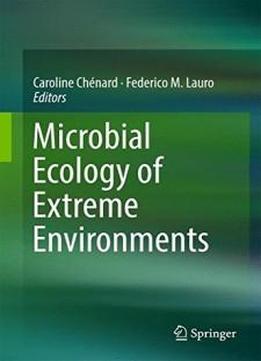
Microbial Ecology Of Extreme Environments
by Caroline Chénard /
2017 / English / PDF
10.2 MB Download
This book explores microbial lifestyles, biochemical adaptations,
and trophic interactions occurring in extreme environments. By
summarizing the latest findings in the field it provides a
valuable reference for future studies. Spark ideas for
biotechnological and commercial exploitation of microbiomes at
the extremes of life are presented. Chapters on viruses
complement this highly informative book.
This book explores microbial lifestyles, biochemical adaptations,
and trophic interactions occurring in extreme environments. By
summarizing the latest findings in the field it provides a
valuable reference for future studies. Spark ideas for
biotechnological and commercial exploitation of microbiomes at
the extremes of life are presented. Chapters on viruses
complement this highly informative book.In a vertical journey through the microbial biosphere it
covers aspects of cold environments, hot environments, extreme
saline environments, and extreme pressure environments, and more.
From the deep sea, through polar deserts, up to the clouds in the
air - the diversity of microbial life in all habitats is described,
explored, and comprehensively reviewed. Possible biotechnical
applications are discussed.
In a vertical journey through the microbial biosphere it
covers aspects of cold environments, hot environments, extreme
saline environments, and extreme pressure environments, and more.
From the deep sea, through polar deserts, up to the clouds in the
air - the diversity of microbial life in all habitats is described,
explored, and comprehensively reviewed. Possible biotechnical
applications are discussed.
This book aims to provide a useful reference for those who want
to start a research program in extreme microbiology and,
hopefully, inspire new research directions.
This book aims to provide a useful reference for those who want
to start a research program in extreme microbiology and,
hopefully, inspire new research directions.











